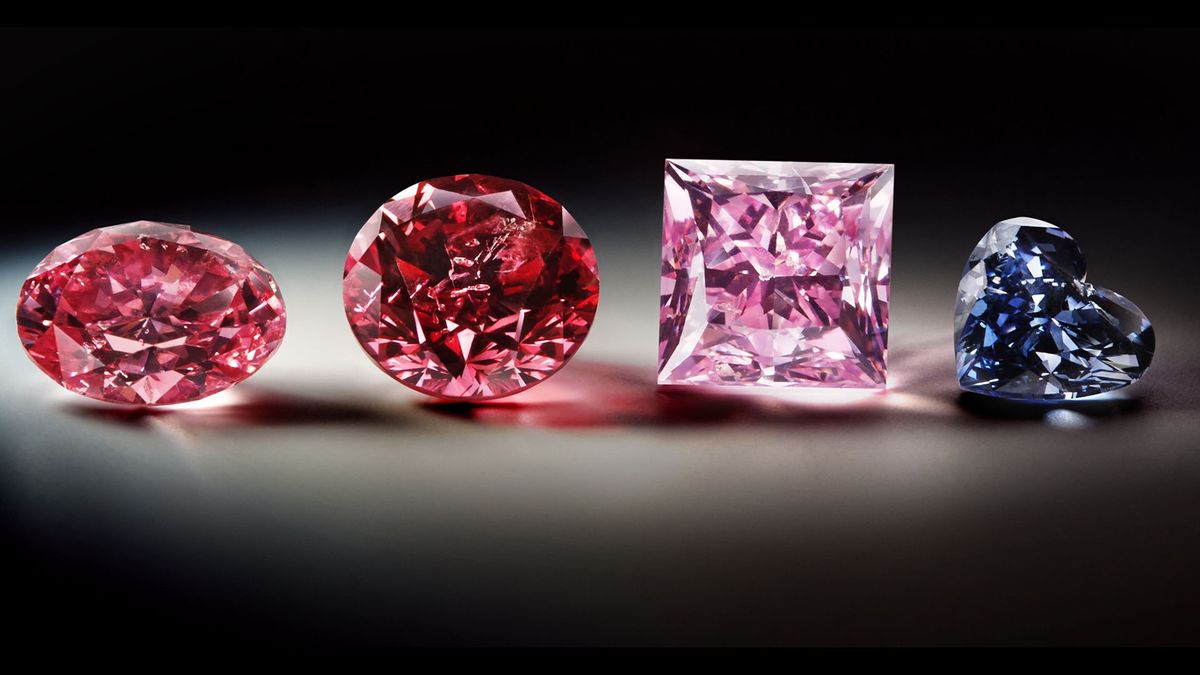Earth may owe its supply of pink diamonds to the breakup of the planet’s first supercontinent.
The Argyle formation in western Australia is the source of 90% of pink diamonds on Earth. It’s an odd spot for diamonds: at the edge of a continent rather than in the center, where most diamond mines tend to be, and in a type of rock that is slightly different from the rock that usually bears diamonds.
Now, new research suggests that the strange color and strange geology likely come from a similar origin, the plate tectonics of the planet some 1.3 billion years ago. Recent studies from other researchers suggest that these large-scale continental movements are important for bringing diamonds of other colors to the surface, as well.
“The breakup of these continents are fundamental at getting these diamonds up from these deep depths,” said Hugo Olierook, a research fellow at Curtin University in Australia and lead author of the new study on the origin of the pink diamonds, published today (Sept. 19) in the journal Nature Communications.
Pink diamonds are different from blue or yellow diamonds, which get their color from impurities like nitrogen and boron. In contrast, pink diamonds are colorful only because their crystalline structure has been bent. The Argyle also hosts a lot of brown diamonds, which get their color from an even greater deformation of the crystal structure.
“Pinks are, say, a small push, if you like,” Olierook told Live Science.”You push a little bit too hard and they turn brown.”
Related: How do scientists figure out how old things are?
The Argyle diamond mine closed in 2020. Research from the 1980s, shortly after the discovery of the cache, had pegged the age of the rocks there at about 1.2 billion years. But even the scientists who did that original work were not convinced of that number, Olierook said, due to technical limitations. He and his colleagues decided to check again using modern equipment, particularly laser ablation technology that allowed them to carefully pinpoint the individual crystals in the rock they were dating.
Selected octahedral pink diamonds found in the Argyle diamond mine. (Image credit: Murray Rayner)
These new results revealed that the pink-diamond-bearing Argyle is 100 million years older than previously believed, at 1.3 billion years in age. That puts its origin right at the beginning of the breakup of the supercontinent Nuna.
This paints a new picture of how the Argyle’s pink diamonds came to be, Olierook said. First, some time around 1.8 billion years ago, two bits of continental crust smashed together as part of the formation of Nuna. What would eventually become the Argyle formation sat right at this juncture. The collision of the crust is probably what bent the diamonds and made them pink, Olierook said.
It was the breakup of Nuna, 500 million years later, that then brought the diamonds to the surface. The continent did not split right at the Argyle, but the stretching that went on likely weakened the “old wound” of the continental collision where the formation sits. This weakening allowed an eruption of deep rock — carrying those rare pink diamonds — that occurred over days to weeks.
“I think we’re seeing how in general, the mantle is destabilized when supercontinents break up,” Olierook said. “That rifting process seems to not just work the edges, but also seems to work in the middle of continents, and that’s perhaps what is allowing diamonds to come up in the middle of them” in most cases, he said.
Photograph of the Argyle diamond mine in the Kimberley region of Western Australia. (Image credit: Murray Rayner)
Tracking diamonds’ paths from the depths to the surface is helpful for understanding how carbon moves in and out of the planet’s interior, Olierook said. (Diamonds are mostly pure carbon.) The Argyle is a pretty unique spot, he said, but there is a chance that pink diamonds could be found elsewhere on Earth.The problem is that if pink diamonds form on the edges of continents, they’re likely to be buried under a lot of eroded-away rock and sediment, he said.
“I do think we will find another Argyle, another pink diamond treasure trove,” he said, “but it’s going to take a lot of luck.”
Editor’s Note: This story was updated to correct the journal name. The research was published in Nature Communications, not Nature.
































